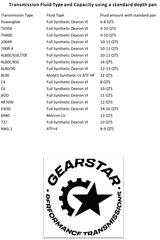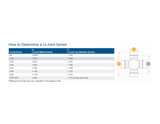Picking the Right Automatic Transmission for Your Street Rod
There was a time when automatic transmission had all kinds of unique names- Cruise-O-Matic, Hydra-Matic, Ultramatic, and the list goes on. But while he names were different, the basic operation was about the same and they shared the same basic parts, Today automatics are more often identified with a number rather than a name. and there are a number of numbers from which to choose when it comes to picking one fro a street rod. But while it may seem there is a confusing array available, like most choices that have to be made, the more informed you are the easier it is to make a decision. To that end, we're going to examine the basic parts of an automatic, as well as the common modifications that are made, and take a look at the GM transmissions that are commonly used.
PARTS ARE PARTS
While automotive transmissions may have two, three four, or more gears, computer controls and a variety of bells and whistles, the basic internal parts remain the same-there are just more of them. Let's take a look at them.
TORQUE CONVERTER
This is what connects the engine to the transmission. Not only does it allow the engine to keep running while the car is stationary, but it can also provide torque multiplication when accelerating from a standstill. For a simplistic explanation of how a torque converter works, picture what would happen if two electric fans were facing each other and one was turned on. If you say the other one would begin to turn, you've got the idea. In a torque converter, both fans are in a container: One is connected to the engine and the other to the transmission, and oil is involved rather than air.
As might be expected, there is some slippage inherent with a torque converter, so many now have a lockup devise that hooks the transmission directly to the engine for increased mileage. There is also another reason. There is an increased load on the torque converter with the higher ratio provided by an overdrive Fourth gear, and some slippage takes place as a result, that slippage creates heat and that's the enemy of an automatic transmission. Slippage is eliminated, and so is the additional heat, by locking the converter with a hydraulically applied internal clutch.
PLANETARY GEARS
As gears go, planetaries can do it all, and they are at the core of an automatic's operation. Made up of three elements-a sun, ring, and planet pinion gears-they provide forward or reverse rotation, a speed increase, constant speed, or a speed reduction.
Three things are necessary to make planetary gears operate: an input (power from the engine), an output (power going out), and a reactor (one of the elements is held stationary). The gear ratio and the direction of travel depend on which element is performing each function. Most transmissions have more than one planetary gear set to provide a variety of gear ratios.
BANDS AND CLUTCHES
Bands and clutches hold the reactors stationary. An automatic transmission goes into gear by holding one part of a planetary gear set stationary with a band or a clutch that is applied by hydraulic pressure. One reactor is released and another applied when the transmission shifts gears; the transmission felt like it was slipping, that's exactly what was happening - the band or clutch pack wasn't holding the reactor stationary and it was slipping and not transferring full power. In an extreme case, the clutches, or band, don't hold at all, and one or more gears (and in some cases, every gear) stops working as a result.
VALVEBODY
The valvebody is the hydraulic "brain" of the transmission: it controls the shifting of gears by controlling which reactor is applied and when. Some transmissions use hydraulic pressure from a governor; throttle valve, or vacuum modulator to determine shift points, while many contemporary versions use computer-controlled electromechanical servos.
TRANSMISSION MODIFICATIONS
Let's start with the torque converter. In many cases, the stall speed of the converter is increased. Simply put, Stall speed is the rpm that the engine will reach with the transmission in gear, the brakes applied, and the throttle held wide open. The higher rpm simply allows the engine to produce more power, which will launch the car harder from a standstill. The downside is that the higher stall speed converters will slip more in "normal" use. That can create excessive heat, which is what damages transmissions. Of course the perfect solution is a lockup converter with increased stall speed-that's the best of both worlds.
SHIFT KITS
Most stock automatics are designed to be seamless; that is the shifts are smooth to the point of being hard to detect. This is done by timing the release and application of the various reactors. One may begin to release as the other begins to apply with a certain amount of overlap. While this results in a smooth shift, there is a certain amount of slippage that takes place in the process, which wears the friction surfaces.
Shift kits generally do two things: They change the timing of the release and application of the reactors, which results in a firmer, more noticeable shift. In addition, the hydraulic pressure to apply the reactors is often increased too, which means the clutches and bands have more holding power, thus increasing the torque capacity of the transmission.
With many transmissions today using computer controls, a variation on the shift kit theme is the hopped-up computer. It can and will do the same thing as a conventional shift kit, but changes can often be made without dropping the trans pan.
FRICTION SURFACES
A common method to increase an automatic transmission's torque-carrying capacity is to improve the friction surfaces that hold the reactors. This may be done by using improved materials, more clutch plates, wider bands, or a combination of them all.
HARD PARTS
Just as with a manual transmission, an automatic has mechanical components that are susceptible to damage when overstressed. As the horsepower applied to it is increased, it is often necessary to increase the strength of an automatic transmission's shafts, clutch drums, planetary gear sets, sprags, and other internal parts.
TAILORING A TRANSMISSION TO YOUR NEEDS
Depends on the customer's needs, Zack Farah of Gear Star Performance Transmissions normally recommends one of the following levels of performance enhancement:
LEVEL 1
Described by Zack as one step above stock, these transmissions are completely remanufactured using improved Alto frictions and a mild shift kit. They are capable of reliably handling 300-plus horsepower and are perfect for daily drivers.
LEVEL 2
Gear Star �s number one seller, these transmissions are also rebuilt with all-new internal parts. In addition, the torque capacity of the clutch packs is increased by more than 70 percent, and a more sophisticated shift kit is used for a firm, positive shift. Horsepower capacity is 400-plus.
LEVEL 3
Equipped with all hardened and stress-relieved hard parts--- including shafts, drums, and planetaries---these transmissions are for rods see street and part-time dragstrip use and are equipped with high-torque 600-plus-horsepower engines. Additional modifications include three different shift kits, expanded capacity clutch drums with Alto Red Eagle frictions, and Kolene steels.
LEVEL 4
The King Kong of transmissions, these are built to withstand the horsepower a blown big-block can put out. Also popular behind Hemis and big-block Fords, these transmissions have all the Level 3 modifications plus a more aggressive shift kit.
AN OVERVIEW OF GM TRANSMISSIONS
GM has produced a substantial number of automatic transmissions; these are the most popular for street rod use:
POWERGLIDE
First produced with cast-iron cases, and in later years aluminum, these transmission s have two primary applications-restorations of original cars and racing. The early versions are often redone for Tri-Five Chevy restores (Gear Star routinely rebuilds Powerglides and other vintage transmissions, so call for more information) and there is practically an entire industry devoted to building them for drag racing.
TURBO 350
These small, compact, and affordable three-speed transmissions were the most popular street rod transmission before the availability of overdrive automatics. Still a viable choice, Zack has seen a resurgence of interest, and they seem to be making a comeback. The Turbo 350 is a great buy at just a little more than a grand, and comes complete with converter, TV cable, dipstick and tube, dust cover, cooler, and fluid.
TURBO 400
Physically larger and able to handle more horsepower than the 350, the Turbo 400 isn't as efficient, but it is tough. These three-speed transmissions are still an excellent choice for high-horsepower applications, where overdrive isn't necessary.
200-4R
According to Zack, this underrated transmission is the best four-speed overdrive automatic that GM has come up with. Because of its compact proportions, many people assume it's not particularly strong; however, it will handle 800 horsepower or more with the proper modifications. Extremely efficient, thanks to a unique bellhousing bolt pattern; it will bolt to any GM engine.
700-4R
While this is one of the most popular of the overdrive automatics, the 700-R4 does have a reputation for having a difficult to adjust throttle valve cable. As improper adjustment can cause erratic shifting and even lead to complete failure, Gear Star has developed the Fail Safe Maximum Pressure Valve Body System, which reverts to high pressure in the event of a misadjusted or damaged throttle pressure cable. A vacuum lockup system is also used that denies lockup to torque converter under aggressive throttle application.
4L60
The latest version of the 700-R4, the 4L60 features a more sophisticated valvebody, but is otherwise the sane (including gear ratios).
4L60E
A more refined version of the 700-R4/4L60, the E-series transmissions use an electronically controlled valvebody. The TV cable is eliminated, but a standalone computer is required.
4L65E
The 4L65E is found exclusively behind LS-series engines.
4L70E
Found behind the LS7 engine in the new GTO and TrailBlazer SS and SSRs, this newer version of the 4l64E uses larger front and rear five-pinion planetaries.
4L80E
The big brute of automotive automatics, this transmission is larger than the 700-R4/4L60 series and is capable of handling well over 1,000 horsepower when properly modified.
As you can see, there are many, many choices when it comes to GM automatic transmissions and the modifications that can be made to them. Of course if you're still having trouble deciding, give Zack a call and be prepared to provide as much information as you can, including the approximate weight of the vehicle, horsepower, rear gear ratio, rear tire diameter, and its intended use. You can look forward to lots of trouble free miles in your street rod with the right transmission and the appropriate modifications for the application, and you won't have to shift for yourself.
GM TRANSMISSION RATIOS
| |
FIRST | SECOND | THIRD | FOURTH |
| Powerglide | 1.76/1.82 | 1.00 | |
|
| Th350 | 2.52 | 1.52 | 1.00 | |
| TH400 | 2.48 | 1.48 | 1.00 | |
| 200-R4 | 2.74 | 1.57 | 1.00 | 0.67 |
| 700=R4/4L60 3.06 | 1.62 | 1.00 | 0.70 | |
| 4L80E | 2.48 | 1.48 | 1.00 | 0.75 |

All lined up and ready to go, one technician builds each Gear Star transmission, which are numbered and then dyno-tested. All transmissions include an installation package with dipstick and tube, dust cover, mount, Hayden cooler, and Mobil 1 synthetic fluid to fill it up.

Zack Farah stands next to one of Gear Star’s Level 4 4L80E transmissions, which is rated to 1,200 hp and includes Yank Racing 10-inch five disc converters. Additional improvements include a 34-element heavy-duty sprag assembly, Kevlar low reverse heavy-duty band, three separated TransGo shift kits, and a high-flow, expanded-capacity pump assembly. Adapters are available to put these behind a variety of engines other than GM.
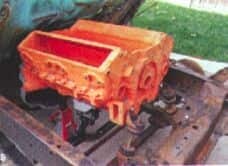
There are a number of torque converter options. The most flexibility is obtained with a lockup converter that has a slightly higher-than-stock stall speed.
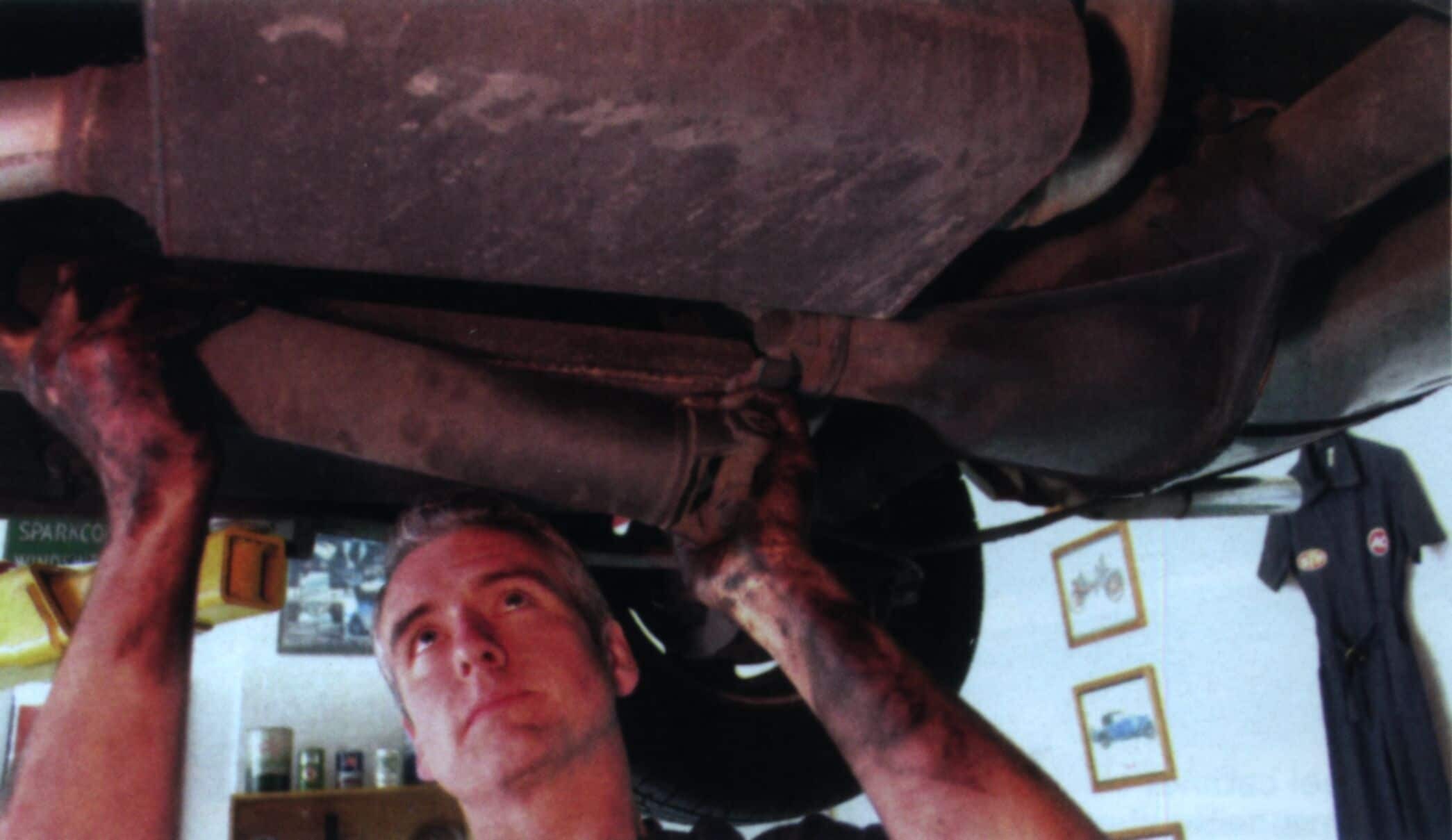
These are the clutch packs for a planetary gear sat; steel and friction discs are used alternately. Gear Star uses Alto frictions and steels exclusively.
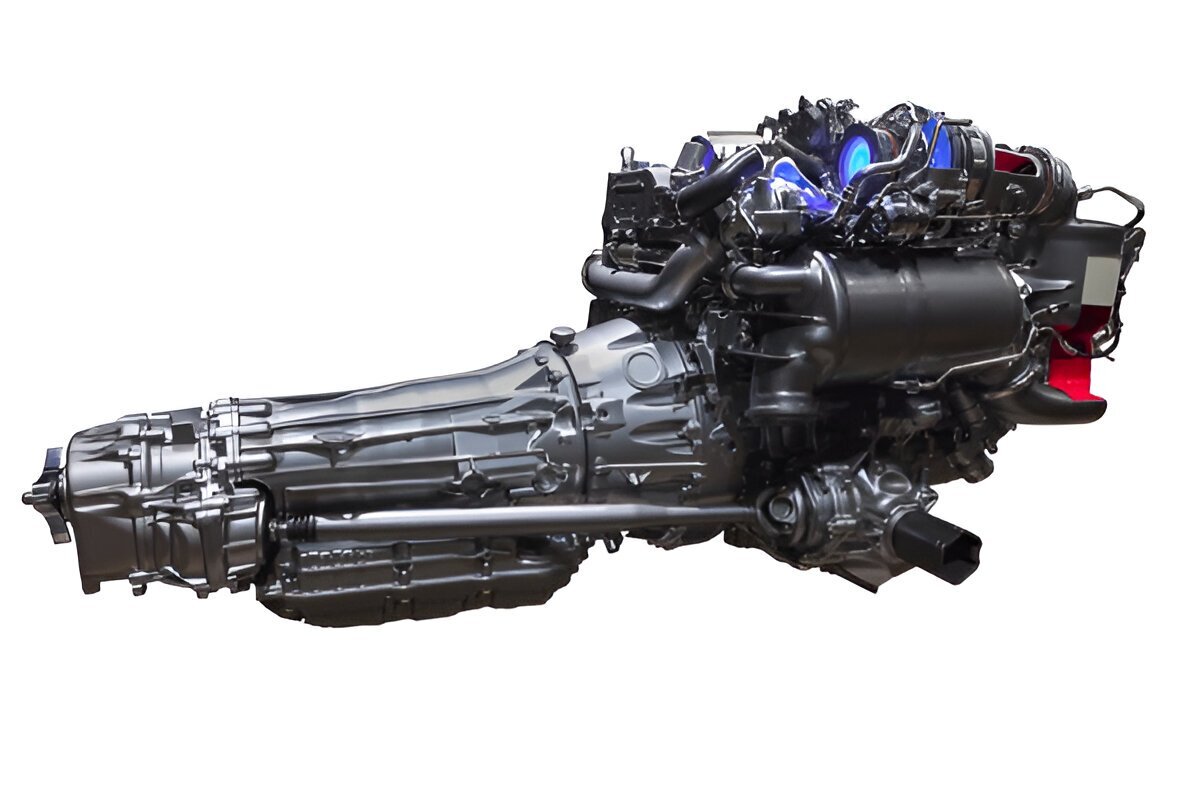
Here are examples of bands found in an automatic transmission; Gear Star uses wider bands and hardened drums for high-performance applications.
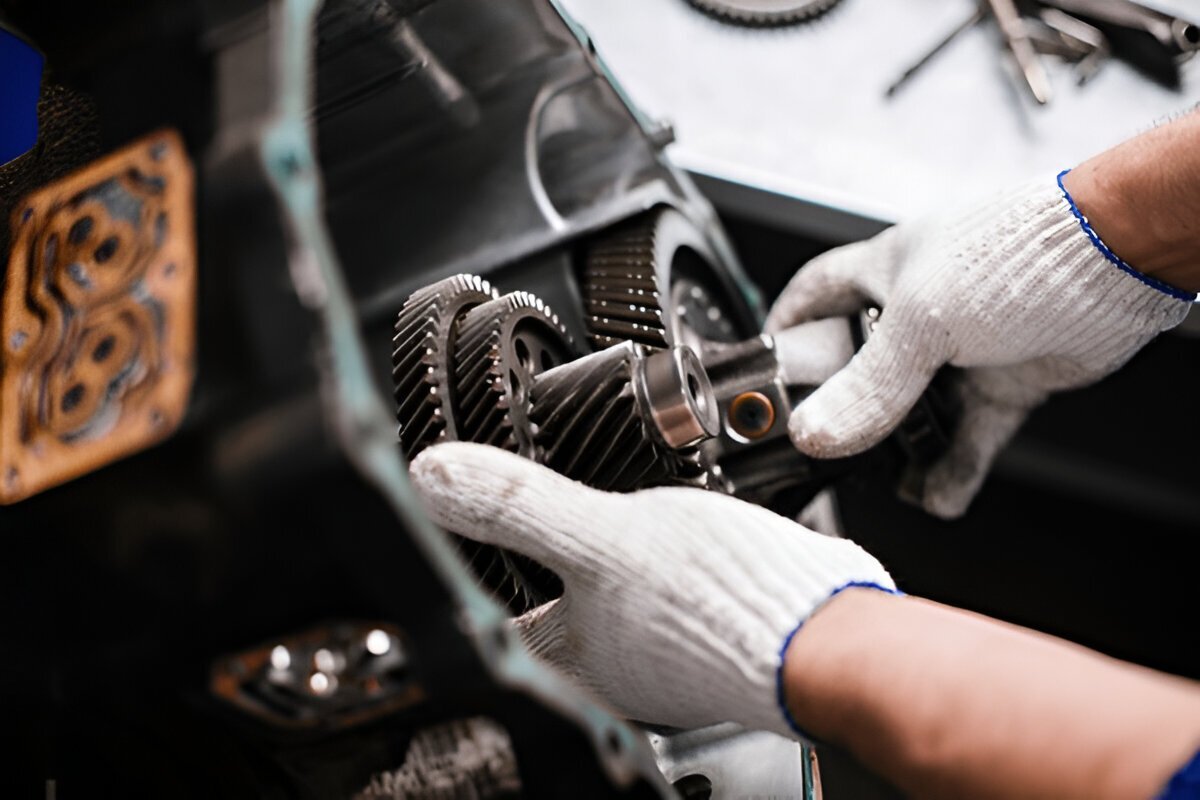
Three of the four pinions on this planetary gear set can easily be seen. The notches below are where the frictions of clutch discs engage. Similar notches are in the drum of the assembly for the steel discs.
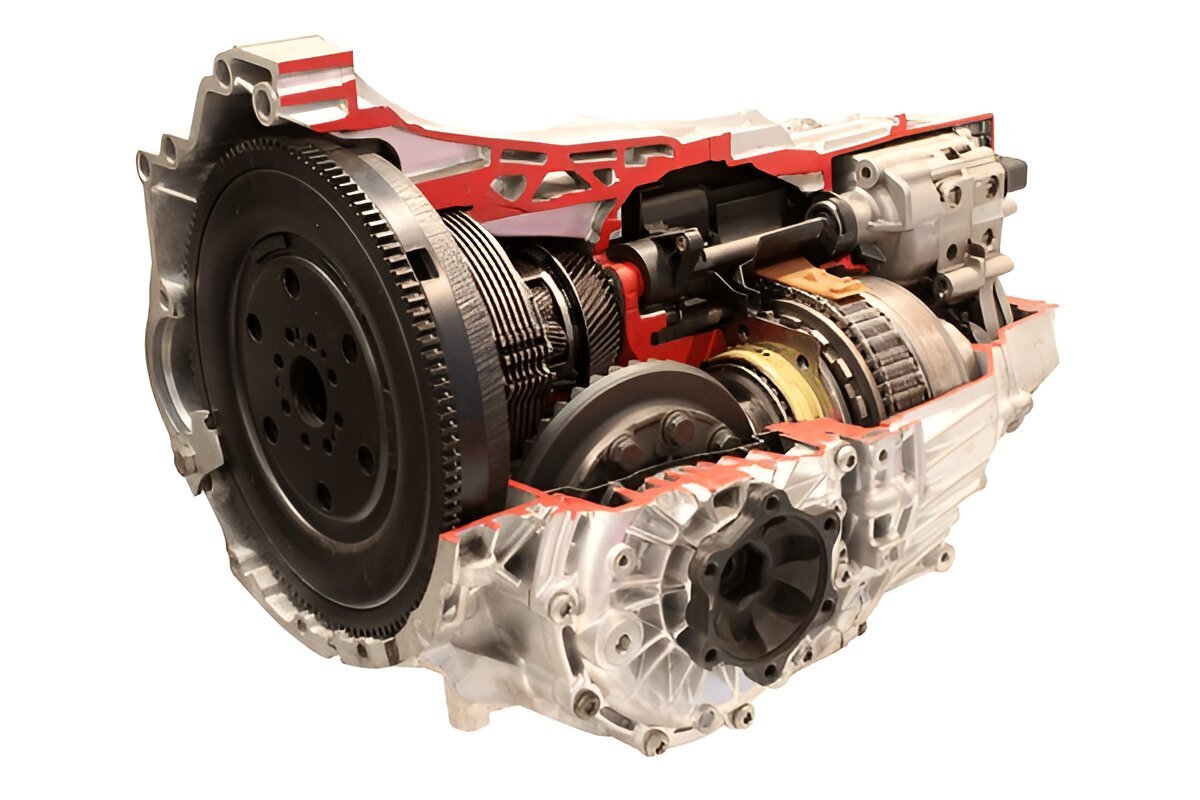
The planetary gear set fits inside a drum, the clutch pack goes on op of it, followed by a piston that applies pressure to hold one of the elements of the planetary stationary. Additional discs in the clutch pack increase its holding power. Another component, called a sprag or one-way clutch, may be used to hold the planetaries.
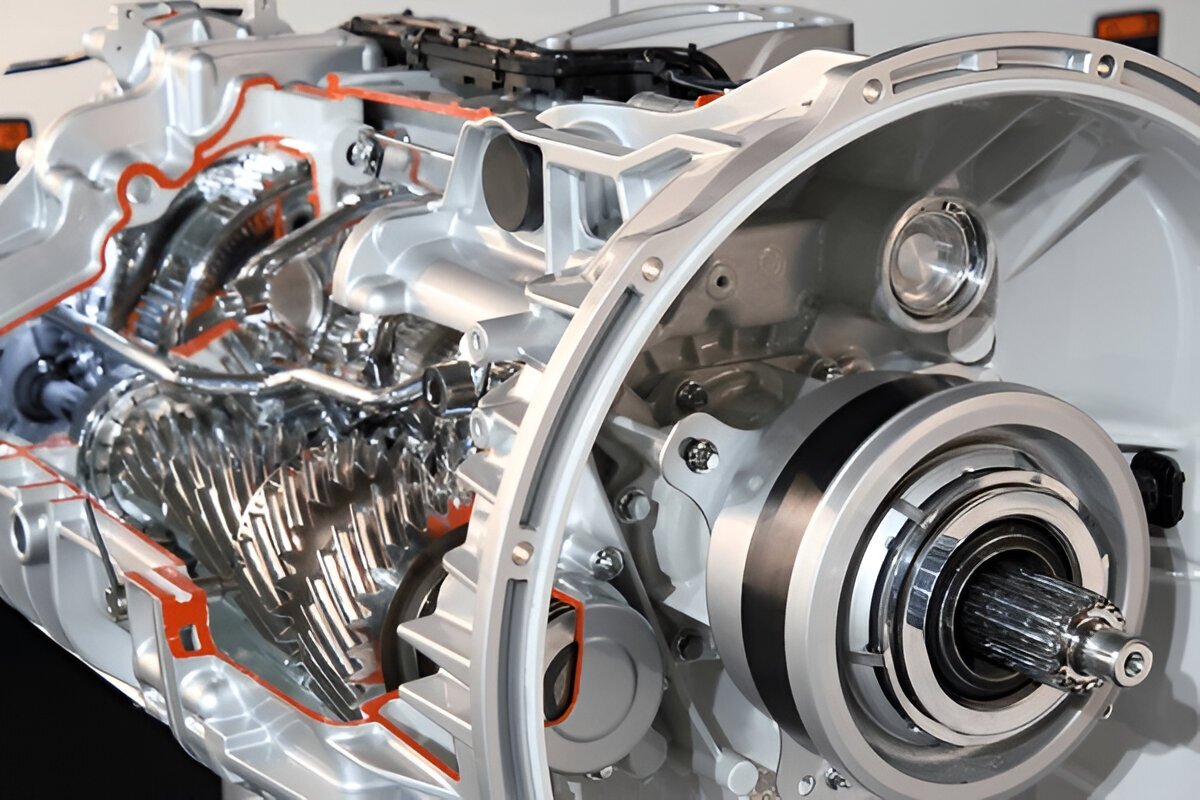
Looking a little like an ant farm, all those passageways in the case are to direct hydraulic fluid to specific locations to apply a clutch or band, or to lubricate a component. Gear Star uses all new cases for 4L70 and 4L85 transmissions.

Here the valvebody, filter, and wiring harness have been put in place. Depending on the application, one or more TransGo shift kits will be used.
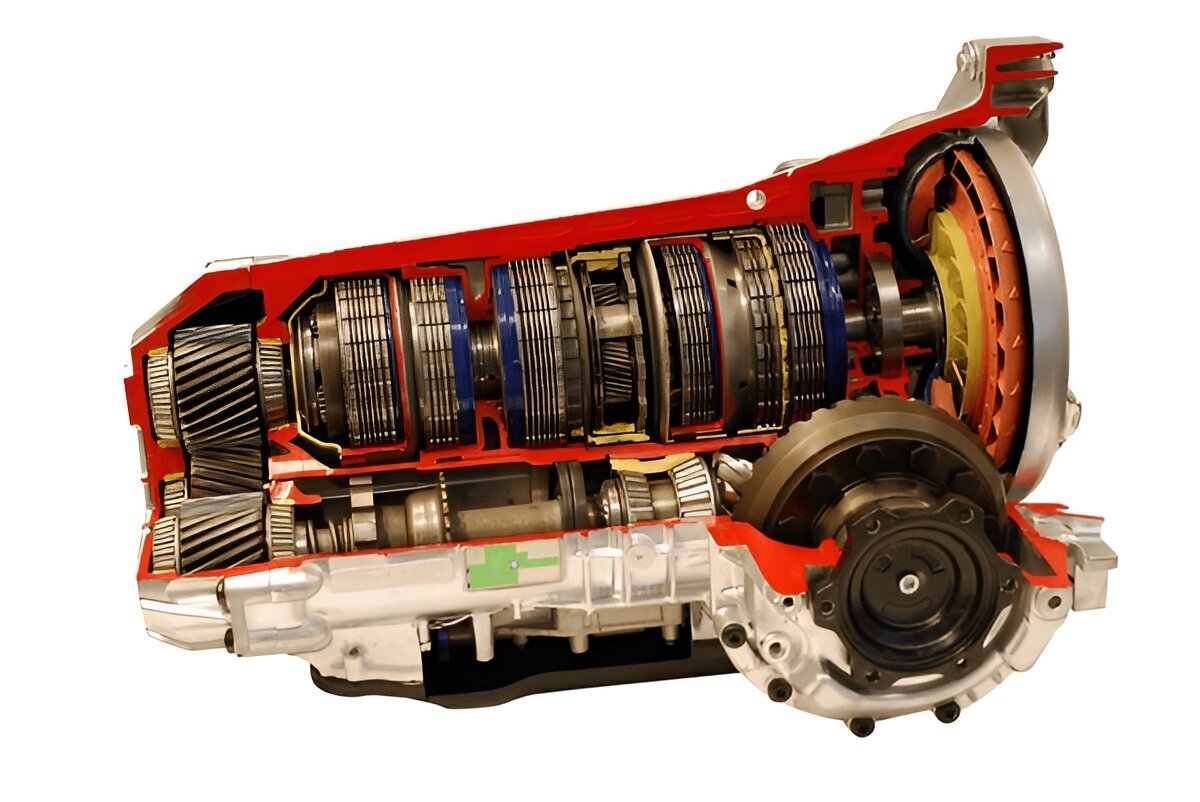
This is the pump for an automatic transmission; it supplies hydraulic pressure necessary to shift gears and lubricate the moving parts. Pump pressure is often increased for firmer shifts and increased torque capacity.
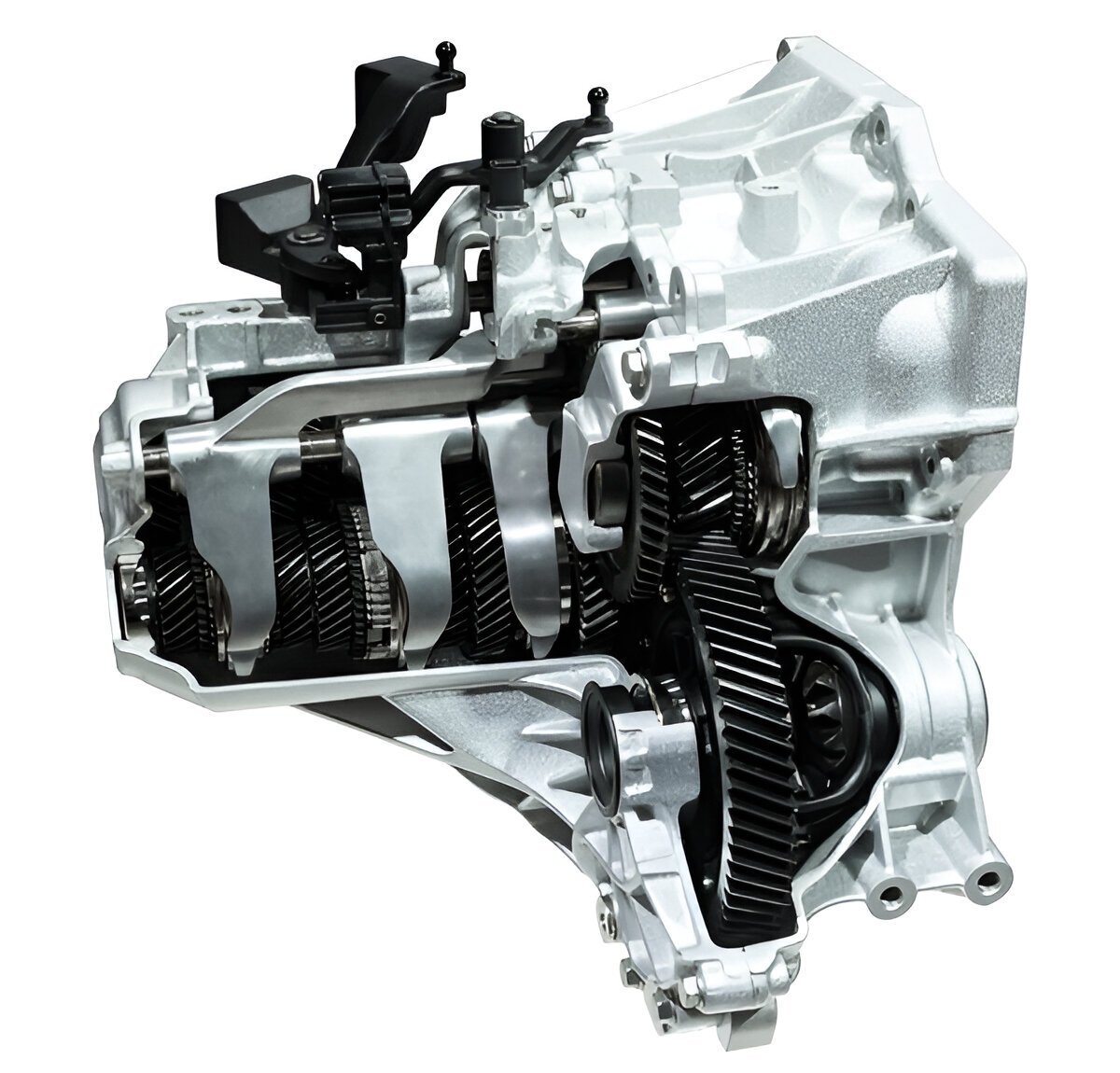
Gear Star substitutes stronger, hardened, and stress-relieved shafts in Level 3 and 4 transmissions for reliability. Level 2, 3, and 4 transmissions carry a 24-month, 24,000-mile warranty.
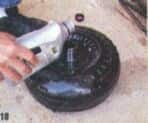
Gear Star offers its services to those running vintage transmissions as well. This cast iron Powerglide has been completely rebuilt and is better than new thanks to modern internal parts.

